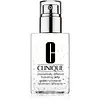What's inside
What's inside
 Key Ingredients
Key Ingredients

 Benefits
Benefits

 Concerns
Concerns

 Ingredients Side-by-side
Ingredients Side-by-side

Water
Skin ConditioningPropanediol
SolventGlycerin
HumectantCetyl Ethylhexanoate
EmollientNiacinamide
Smoothing1,2-Hexanediol
Skin ConditioningPanthenol
Skin ConditioningVinyldimethicone
Butylene Glycol
HumectantCetearyl Olivate
Cetearyl Alcohol
EmollientGlycyrrhiza Glabra Root Extract
BleachingOlea Europaea Leaf Extract
PerfumingGlyceryl Glucoside
HumectantAscorbyl Glucoside
AntioxidantZinc PCA
HumectantAscorbic Acid
AntioxidantEthylhexylglycerin
Skin ConditioningHydrogenated Lecithin
EmulsifyingPolyglyceryl-10 Oleate
Skin ConditioningTocopherol
AntioxidantSodium Hyaluronate
HumectantCetyl Alcohol
EmollientCarbomer
Emulsion StabilisingTromethamine
BufferingDisodium EDTA
Water, Propanediol, Glycerin, Cetyl Ethylhexanoate, Niacinamide, 1,2-Hexanediol, Panthenol, Vinyldimethicone, Butylene Glycol, Cetearyl Olivate, Cetearyl Alcohol, Glycyrrhiza Glabra Root Extract, Olea Europaea Leaf Extract, Glyceryl Glucoside, Ascorbyl Glucoside, Zinc PCA, Ascorbic Acid, Ethylhexylglycerin, Hydrogenated Lecithin, Polyglyceryl-10 Oleate, Tocopherol, Sodium Hyaluronate, Cetyl Alcohol, Carbomer, Tromethamine, Disodium EDTA
Water
Skin ConditioningBis-PEG-18 Methyl Ether Dimethyl Silane
EmollientButylene Glycol
HumectantGlycerin
HumectantCucumis Sativus Fruit Extract
EmollientHypnea Musciformis Extract
Skin ProtectingGelidiella Acerosa Extract
Skin ProtectingHordeum Vulgare Extract
EmollientPadina Pavonica Thallus Extract
Skin ConditioningHelianthus Annuus Seedcake
AbrasiveSucrose
HumectantCaffeine
Skin ConditioningSodium Hyaluronate
HumectantHydroxyethyl Urea
HumectantHydrolyzed Rice Extract
Skin ConditioningSorbitol
HumectantSodium Polyaspartate
HumectantPPG-6-Decyltetradeceth-30
EmulsifyingEthylhexylglycerin
Skin ConditioningPropylene Glycol Dicaprate
EmollientCaprylyl Glycol
EmollientTrehalose
HumectantPolysorbate 80
EmulsifyingCarbomer
Emulsion StabilisingSodium Hydroxide
BufferingHexylene Glycol
EmulsifyingCitric Acid
BufferingSodium Citrate
BufferingDisodium EDTA
Phenoxyethanol
PreservativeWater, Bis-PEG-18 Methyl Ether Dimethyl Silane, Butylene Glycol, Glycerin, Cucumis Sativus Fruit Extract, Hypnea Musciformis Extract, Gelidiella Acerosa Extract, Hordeum Vulgare Extract, Padina Pavonica Thallus Extract, Helianthus Annuus Seedcake, Sucrose, Caffeine, Sodium Hyaluronate, Hydroxyethyl Urea, Hydrolyzed Rice Extract, Sorbitol, Sodium Polyaspartate, PPG-6-Decyltetradeceth-30, Ethylhexylglycerin, Propylene Glycol Dicaprate, Caprylyl Glycol, Trehalose, Polysorbate 80, Carbomer, Sodium Hydroxide, Hexylene Glycol, Citric Acid, Sodium Citrate, Disodium EDTA, Phenoxyethanol
 Reviews
Reviews

Ingredients Explained
These ingredients are found in both products.
Ingredients higher up in an ingredient list are typically present in a larger amount.
Butylene Glycol (or BG) is used within cosmetic products for a few different reasons:
Overall, Butylene Glycol is a safe and well-rounded ingredient that works well with other ingredients.
Though this ingredient works well with most skin types, some people with sensitive skin may experience a reaction such as allergic rashes, closed comedones, or itchiness.
Learn more about Butylene GlycolCarbomer is a polymer of acrylic acid. Its main role is to create a gel consistency.
A high amount of carbomer can cause pilling or balling up of products. Don't worry, most products contain 1% or less of carbomer.
Disodium EDTA plays a role in making products more stable by aiding other preservatives.
It is a chelating agent, meaning it neutralizes metal ions that may be found in a product.
Disodium EDTA is a salt of edetic acid and is found to be safe in cosmetic ingredients.
Learn more about Disodium EDTAEthylhexylglycerin (we can't pronounce this either) is commonly used as a preservative and skin softener. It is derived from glyceryl.
You might see Ethylhexylglycerin often paired with other preservatives such as phenoxyethanol. Ethylhexylglycerin has been found to increase the effectiveness of these other preservatives.
Glycerin is already naturally found in your skin. It helps moisturize and protect your skin.
A study from 2016 found glycerin to be more effective as a humectant than AHAs and hyaluronic acid.
As a humectant, it helps the skin stay hydrated by pulling moisture to your skin. The low molecular weight of glycerin allows it to pull moisture into the deeper layers of your skin.
Hydrated skin improves your skin barrier; Your skin barrier helps protect against irritants and bacteria.
Glycerin has also been found to have antimicrobial and antiviral properties. Due to these properties, glycerin is often used in wound and burn treatments.
In cosmetics, glycerin is usually derived from plants such as soybean or palm. However, it can also be sourced from animals, such as tallow or animal fat.
This ingredient is organic, colorless, odorless, and non-toxic.
Glycerin is the name for this ingredient in American English. British English uses Glycerol/Glycerine.
Learn more about GlycerinSodium Hyaluronate is hyaluronic acid's salt form. It is commonly derived from the sodium salt of hyaluronic acid.
Like hyaluronic acid, it is great at holding water and acts as a humectant. This makes it a great skin hydrating ingredient.
Sodium Hyaluronate is naturally occurring in our bodies and is mostly found in eye fluid and joints.
These are some other common types of Hyaluronic Acid:
Learn more about Sodium HyaluronateWater. It's the most common cosmetic ingredient of all. You'll usually see it at the top of ingredient lists, meaning that it makes up the largest part of the product.
So why is it so popular? Water most often acts as a solvent - this means that it helps dissolve other ingredients into the formulation.
You'll also recognize water as that liquid we all need to stay alive. If you see this, drink a glass of water. Stay hydrated!
Learn more about Water